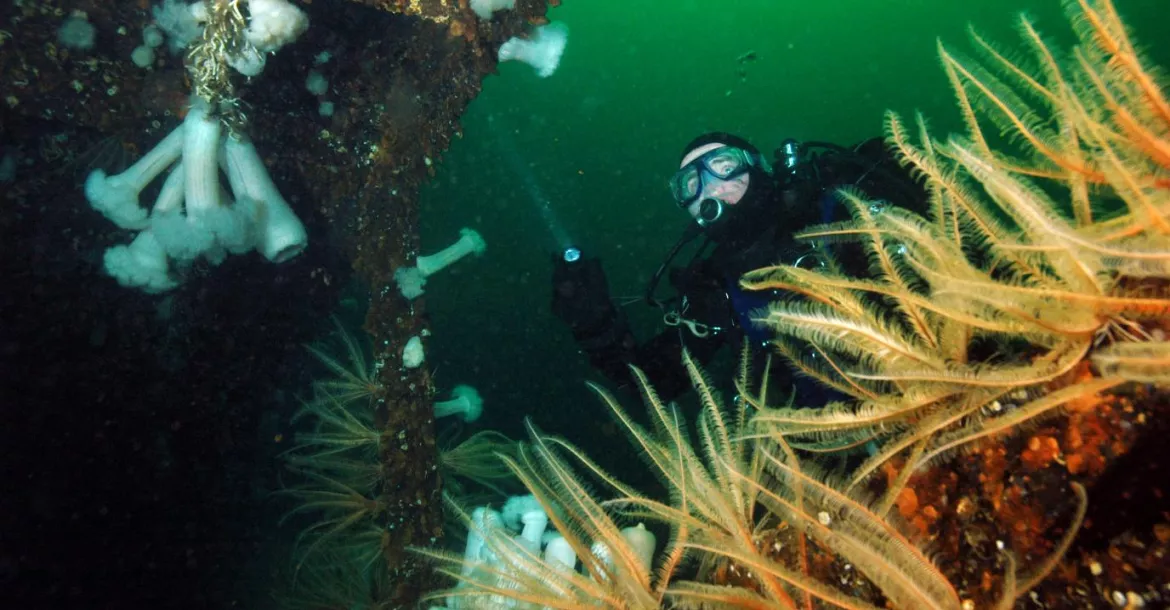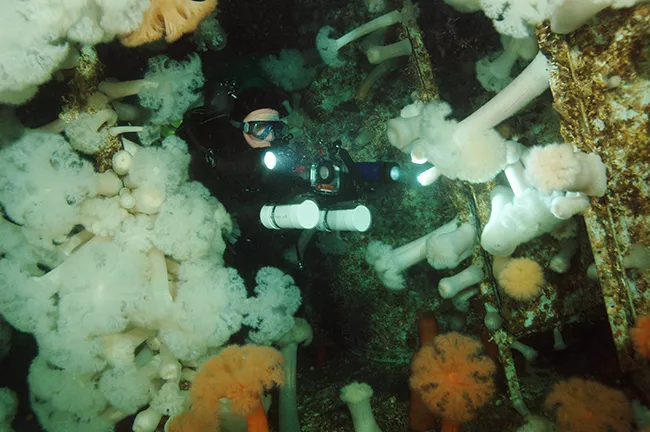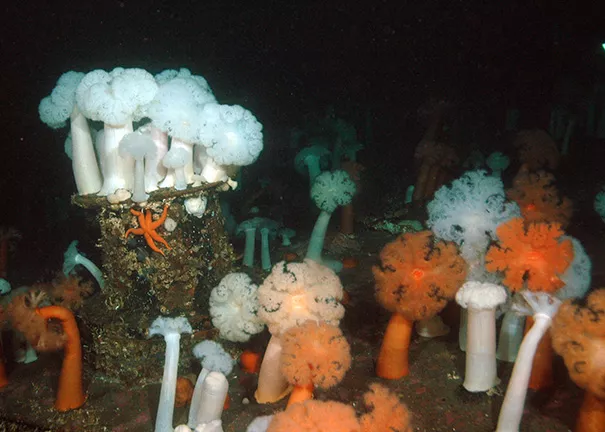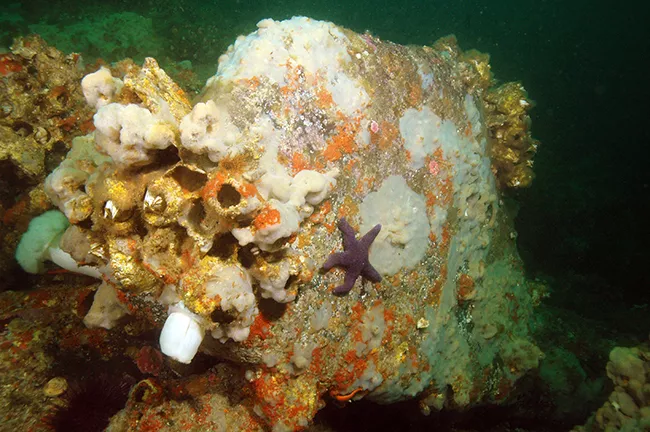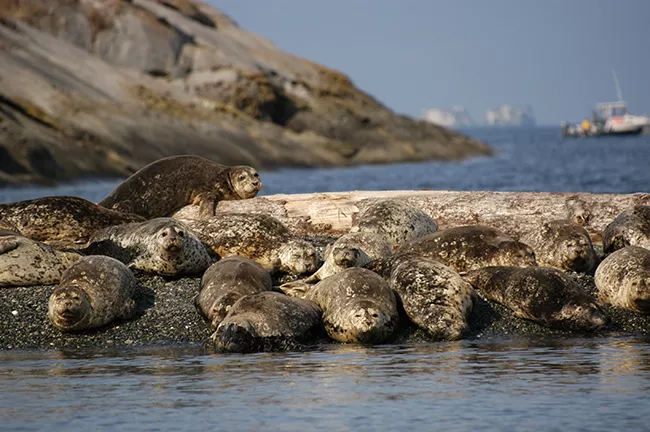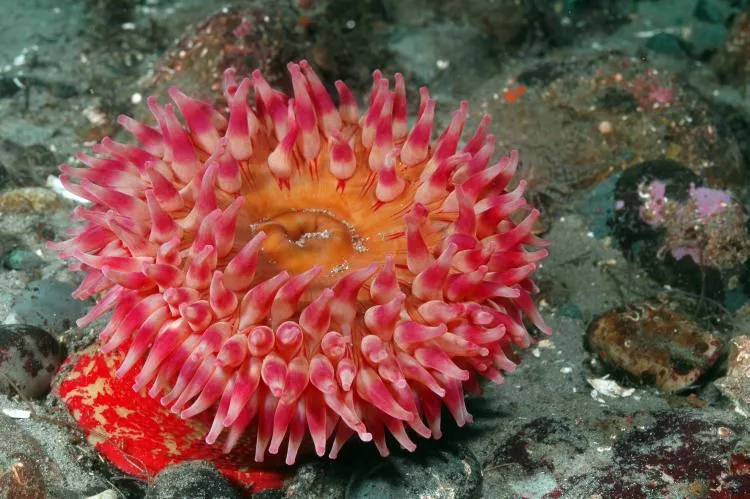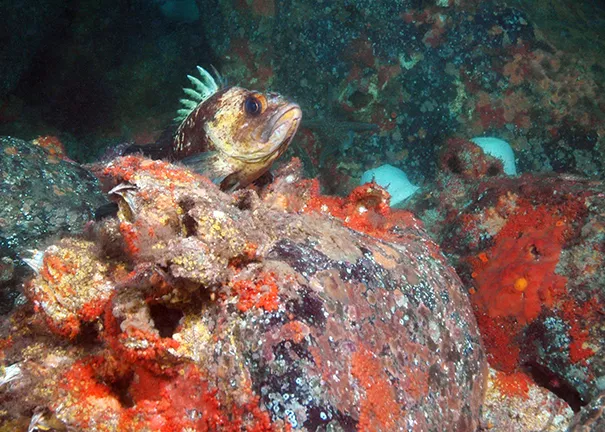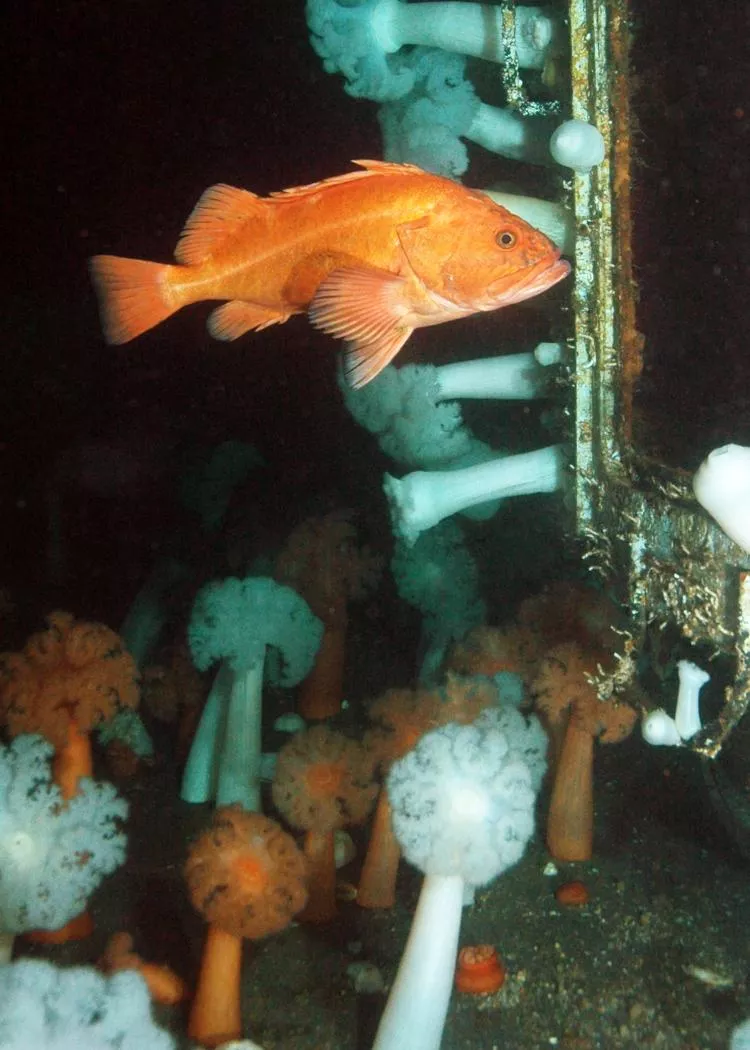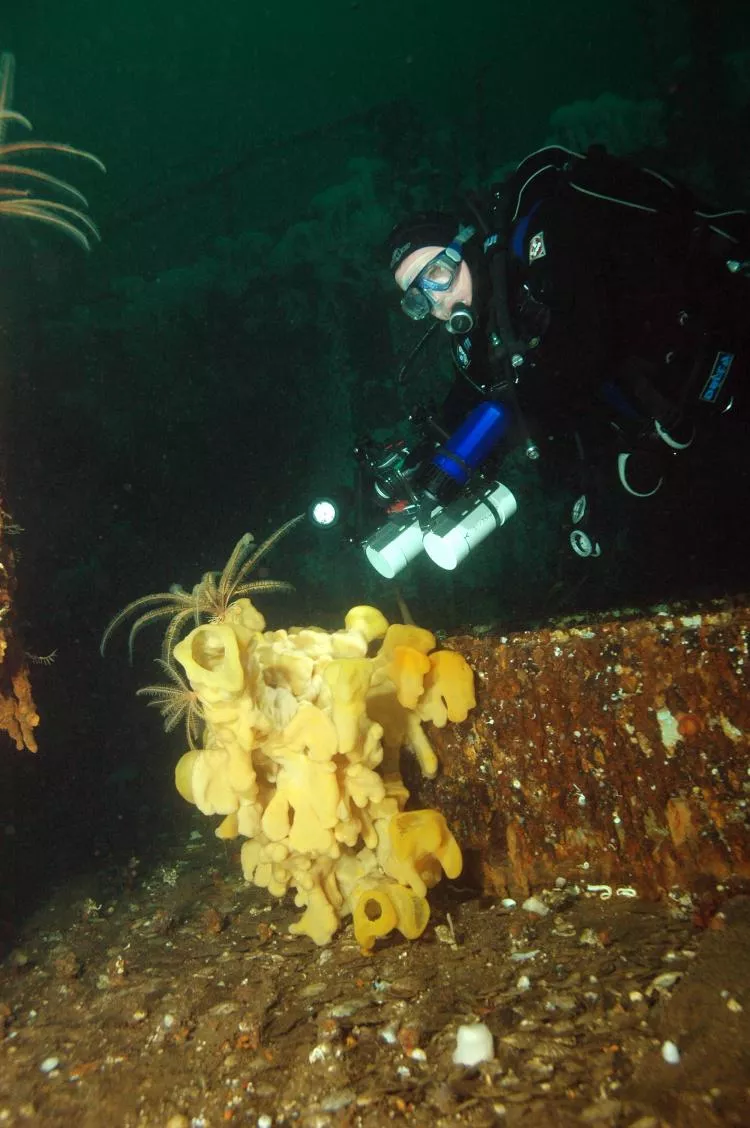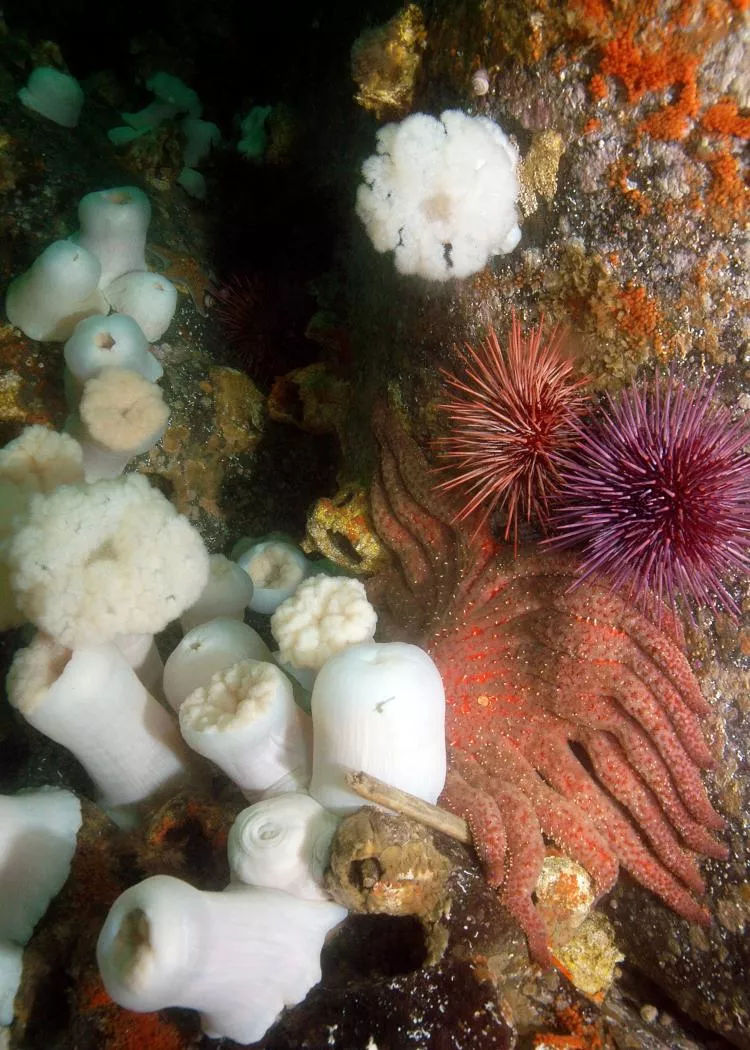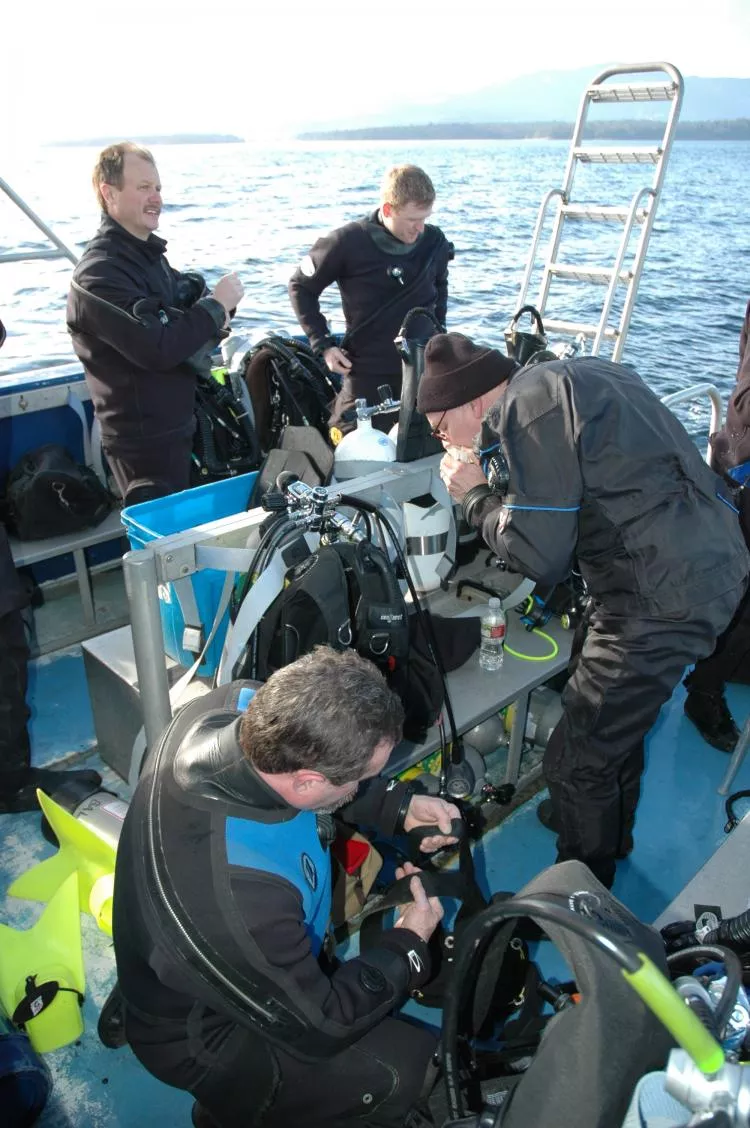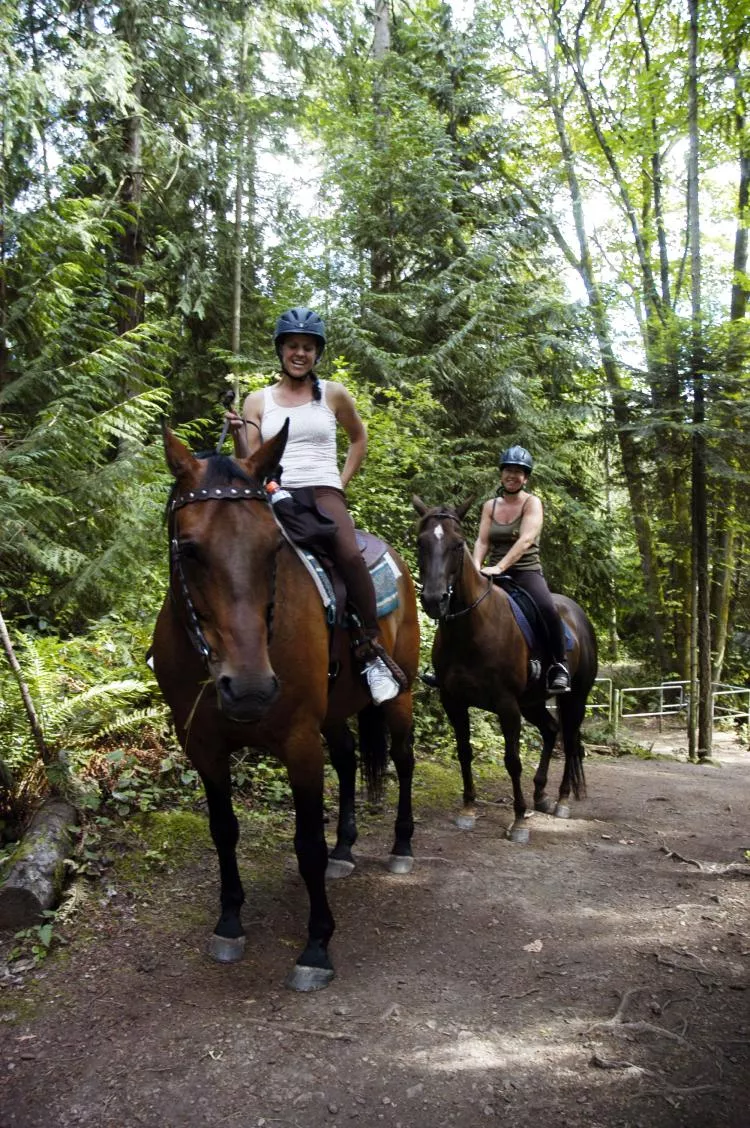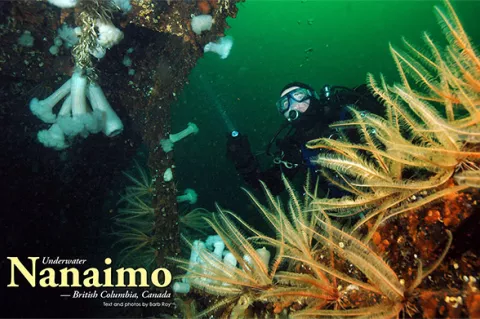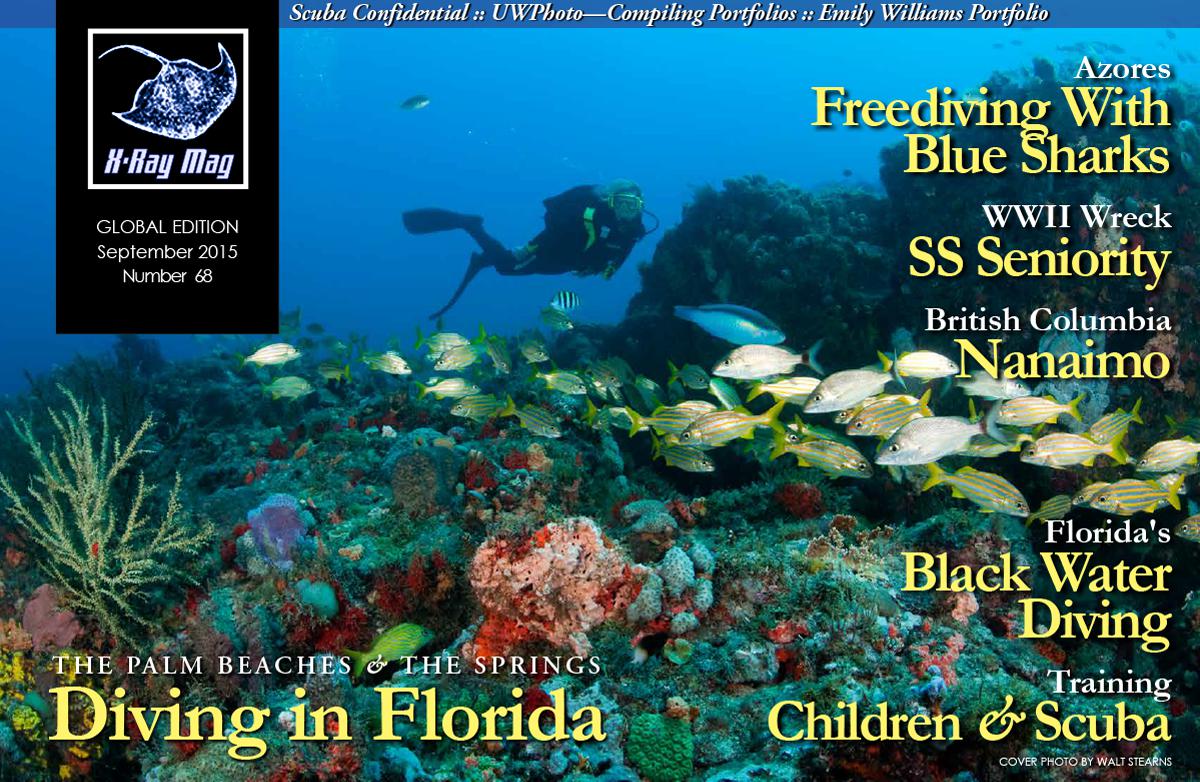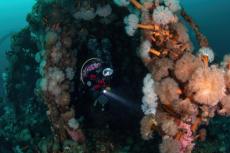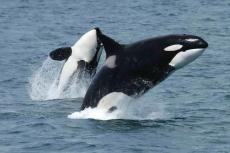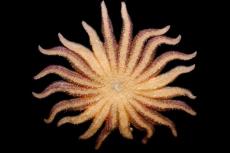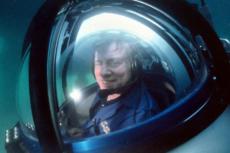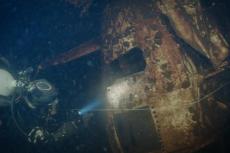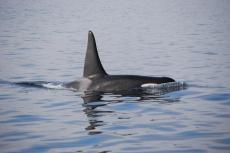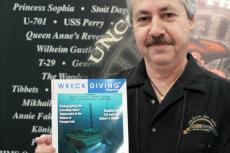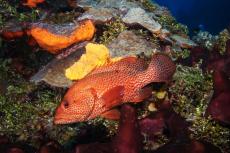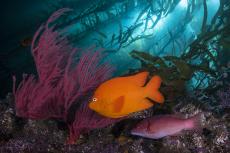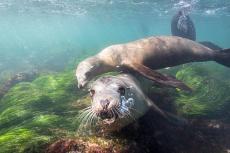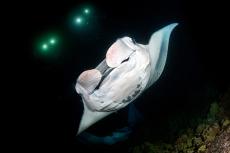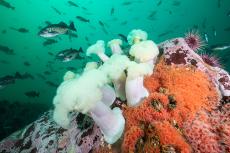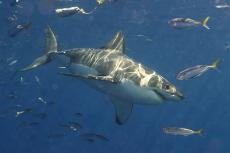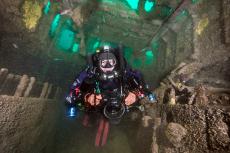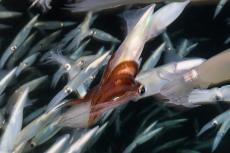I am often asked, “Where is the best place to photograph underwater critters in British Columbia?” Well, there is certainly no simple answer to this question and I usually end up replying something like this; “Unless there is a plankton bloom, bad weather or visibility is poor, there are no bad places to dive in BC, therefore you can see critters on every dive!”
Contributed by
This is especially true around Nanaimo, a popular hub destination on Vancouver Island that is easy to get to and can be frequented by divers on a year-round basis. For me, it’s the opportunity to photograph a variety of abundant colorful underwater residents that seem to flourish at all the local boat and shore diving sites in the area.
I have listed below some of the more preferred spots I have personally enjoyed photographing in the past with my husband, Wayne Grant, who likes to shoot video. Most of these dives are within a 15- to 20-minute boat ride from the local dock. Keep in mind, however that marine residents change over time and it is up to you, the diver/photographer, to keep your eyes open and your cameras ready!
Neck Point
Neck Point has always been one of my favorite dives because we often find resident octopi, wolf-eels and giant nudibranchs. The site consists of a large sheltered cove that tapers down to between 60 and 90 feet (18 to 27 meters) near an outcropping reef with exposed rocks. Many divers do this as a shore dive, but I like the convenience of leisurely stepping off a boat and having it pick me up wherever I end up.
In the shallow pebble cove, we have found orange and cream coloured giant nudibranchs on the bottom searching for a meal of burrowing anemones. Huge sunflower sea stars can also be found here. If you head out to the reef and on the outer side, there is a fairly vertical wall supporting an array of sponges, crabs, nudibranchs and snails. Continuing in the direction towards town and a bit deeper, is a diamond-shaped rock. At the base is a den where you never know what you might find! It could be a lingcod, wolf-eel or octopus.
This dive site is where I took Wayne on one of his first ocean dives over 15 years ago for his final checkout dives. We saw not only the octopus but two wolf-eels and had several sea lions swim by to check us out. What a rush it was!
Snake Island Wall
I like to refer to this dive, on the north side of the small sandstone island, as nudibranch heaven. Wayne thinks of it as wolf-eel heaven because we have followed many wolf-eels out in the open as they have made their way across a flat stretch of terrain in about 20 feet (6 meters) of water while searching for food. If you have a keen eye, it is possible to spot grunt sculpins on the rocky bottom or see tiny decorator crabs scurrying about. Decorator crabs get their names by collecting various things living in the area and affixing them to their back carapace. If they move to a new area, they pull off all the old things (sponge, anemones, kelp) and reattach the new surrounding décor.
Although this is a great macro photography site for the small things, I also like it for wide-angle photography. As you head away from the island, the depth continually increases until you reach a beautiful wall. Some sections are covered in tall plumose anemones, creating a waterfall of white cascading down. Technical diving friends have told me of giant cloud sponges in the 200-foot (61-meter) range.
“Nanaimo also offers an exciting experience for snorkelers at Snake Island,” said Ed Singer, owner of the dive store and charter operation, Sundown Diving, located in Nanaimo for over 30 years. “Snorkeling with the resident harbor seal colony is very popular at Snake Island. This experience always brings smiles even to the most experienced divers as quite often interaction with these mammals can be very close.”
Ed’s dive store and charter boat offer individuals and families the opportunity to go on special charters where they supply all of the gear and spend several hours playing in the water. During a dive charter, divers will often spend their downtime between dives on the wrecks (other side of island), snorkeling with the seals.
The Saskatchewan wreck
The retired Canadian military vessel, HMCS Saskatchewan was scuttled in June 1997. Since then, a plethora of life has laid claim to its 366 feet (111 meters) of steel hull. Looking at the wreck now will make you question if it is steel or stone under the massive amount of orange and white plumose anemones. Ranging in size from a few inches to almost two feet, the anemones have transformed the harsh structures into a pastel soft texture. Over the years, millions of fish have used the wreck and the neighboring one, Cape Breton, as a nursery. Commonly seen are various species of rockfish, lingcod, perch, cabezon, and other assorted fish.
Not only are the large wrecks great to see critters, they are also used for training by divers to practice their wreck-diving skills and by technical divers employing their deep diving techniques.
One of my favorite things to do on this dive is to visit the resident yelloweye rockfish. They can be shy illusive creatures and sometimes hard to find, but if you do, it is quite a sight! These bright orange fish can get exceptionally large and can easily startle a diver if you are swimming along and the sun is behind a cloud and it is dark down there… You get the picture, hopefully.
The Cape Breton wreck
The HMCS Cape Breton has really gained a bountiful supply of life covering its many decks and structures since it was scuttled in October 2001. I like how the rust sickles hang from sagging wire rails along the sides. Looks like something you might see on a National Geographic special, only you don’t have to venture over a thousand feet under the water to see it!
The last time we explored the Breton, there were hundreds of brown and gold feather stars (sea lily) clinging to the wire-railings as they fed on the plankton. When they wanted to move to a different spot, they simply detached and swam to wherever they chose to land. Also growing on the main deck and inside a couple of the rooms, open to divers, we photographed huge clusters of yellow cloud sponges. At every visit, they seemed to grow a bit bigger and spread out even more! If you look closely, you might find young quillback rockfish hiding in the sponge.
If you have the opportunity to check out the back of this ship, I encourage you to do so. I can easily spend a whole dive peeking into the multiple exposed decks and rooms because 40 feet (12 meters) of the stern was removed before sinking. I wouldn’t recommend entering though, unless you are trained in dealing with overhead environments and are equipped with proper exploration gear. But all over this area, you can find lacy white tunicates, sea stars, nudibranchs, anemones and a wealth of other fish and invertebrate life.
Throughout both ships, large holes have been cut in the decks and hulls, designed to be large enough for divers to fit through. But inside can be quite disorientating, so make sure you heed on the side of caution. Overall length of this World War II Victory ship is around 400 feet (122 meters).
Dodd Narrows
Since huge amounts of water are pushed through this tiny channel located between Mudge Island and Vancouver Island, divers can enjoy a spectacular photogenic ride over a carpet of color! This is one of those uniquely different drift diving experiences because of what you might see, but timing is everything. A good boat captain will put you in the water at just the right time, when the water slows to change direction, which is called slack tide. The dive will be anywhere from 20 to 40 minutes, so when it is time to exit the water, please do so! (Because if you overstay, you will get caught in and fight an increasing current as the tide heads out.)
Some sections are covered in tiny anemones and others in vivid pink and purple encrusting hydrocoral. Even huge rocks on the bottom might be covered in a coat of yellow and tan zoanthids. Octopi like to hide under the stone overhangs and groups of jelly-looking slime-tube feather-duster worms can be found in many of the cracks. I have always liked using a close-up lens or wide-angle if I want to include divers in my shots.
Upon early entries, or when doing their safety stops, divers can hang out in a forest of kelp at either end of the channel. On sunny days, I have always liked how rays of sunshine will rain down between fronds of kelp, causing a glittering appearance on the reef below. In turn, resting greenlings, sculpins and rockfish on the reef tend to light up! This is where I wish I could also use video!
Gabriola Pass
A narrow opening for water to flow through is found between Gabriola Island and Valdes Island. Similar to Dodd, it is equally as important to select a proper slack current before entering the water. This site is where I have photographed numerous anemones in all shapes, sizes and colors. The anemones start in just a few feet of water, down to 40 feet (12 meters) and beyond, which is great for close-up or macro photography.
All along the channel are large boulders, mostly covered with some form of yellow, orange, green or red invertebrate life, giving them a bright color under giant barnacles competing for space when the current returns. Limpets, snails and uniquely patterned chitons adorn the deeper shelves while tiny sculpins peer out from holes under fronds of kelp.
I am always astonished to see how beautiful an entire area can be, covered by thousands of small white and pink anemones. This is what it can be like in both Dodd Narrows and Gabriola Pass!
Other dive sites
Orlebar Point on the northeast side of Gabriola Island is a deep sandstone wall accessible by shore. When weather is poor, dive operators might visit the Rivtow Lion, a 157-foot tugboat sitting upright in 80 feet (24 meters) of water off Newcastle Island. I like diving on the Rivtow even when the weather is good! The ship is easy to swim around, and is open and accessible to explore.
These are but a few of the sites Nanaimo has to offer. Any of the local dive stores or charter operators servicing the area will have their own list to choose from. Another of the operators Wayne and I have been out with is Sea Dragon Charters. One of the owners, Jan Breckman, said:
“Our boat is now located at the new Marinaside Resort in Nanaimo. We also have our own air fill station right on the dock beside our boat, so divers don't have to haul tanks off and get air fills. Divers who book through Sea Dragon Charters get approximately 30 percent off standard hotel rates. Our boat can accommodate up to 10 divers, and our captain and divemaster are both from the Nanaimo area, with many years of experience.”
I did enjoy their warm cabin in the winter and their sunny upper deck during summer days. They have operated in Nanaimo for over five years and can arrange rental dive gear if needed.
Ed Singer from Sundown Diving can pick up smaller groups from the ferry and has full dive gear sets for hire, available with tanks and weights for their charters.
During my last dive excursion, when we weren’t diving, I took two of my teen grandkids to Wild Play for three hours of challenging treetop traversing, yielding so much fun! From zip-lining to an activity they call the Primal Swing, we tried them all. For smaller munchkins, they offer a closer to the ground zip-line adventure. Several of our diving friends regularly partake in zip-line activities. Guess it’s the adrenaline thing… But sooooo much fun!
I found a great deal of information on Nanaimo dive sites in the diving guidebook 151 Dives by Betty Pratt-Johnson. You can also find useful information about diving British Columbia by visiting the website of the Dive Industry Association of British Columbia (www.diveindustryassociation.com). During summer visits to Nanaimo, it is always a good idea to make reservations on BC Ferries (www.bcferries.com).
Logistical information
Nanaimo is located on the south central part of eastern Vancouver Island in British Columbia, Canada overlooking Georgia Strait. Access is via one of BC Ferry’s daily departures from Horseshoe Bay or Tsawwassen (closest to the US border).
In the Nanaimo area, there are over 15 golf courses within an hour’s drive, a dozen or more awesome trails for biking or walking and some of the best fishing and paddling spots around. ■

